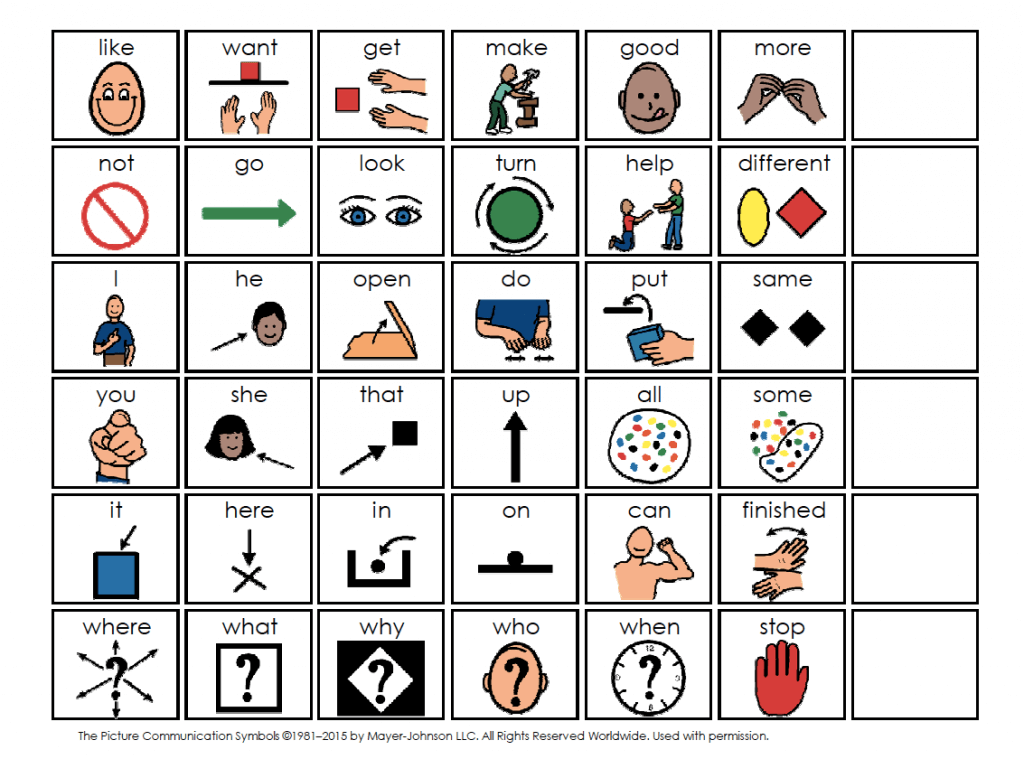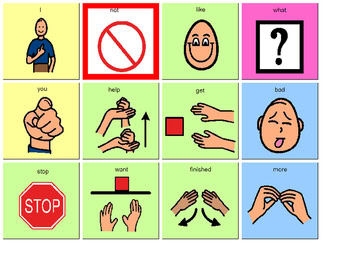
I’m excited to introduce this week’s guest blogger – Ashley from Spedtacular Days to talk about core vocabulary words in the special education classroom. Core vocabulary is one area of my classroom that continues to evolve. There are a variety of areas in my pre-k classroom that give you the opportunity to use core vocabulary words. My suggestion is to start off small with 1-4 words and use them as much as possible in each center or part of your day. Let me explain how I do this below.
If you want to know what core vocabulary is, read this blog post! This can also be so helpful for students that use Augmentative and Alternative Communication AAC
Visual boards around your room will give you the ability to access the core vocabulary words and be a visual reminder to use them in your classroom. I have 3 posters that are around my room to have within reach to make sure I have quick access for small groups and to have for centers. I also have visuals placed in other areas, but the boards are mobile and can travel with you!
The photo is the universal CORE vocabulary I have around my room. The words are Velcro on so they can be interchanged as the students develop and expand their vocabulary. Giving explicit instructions to support staff to make sure they are aware how to use the boards is pertinent.
Gross Motor – When we complete gross motor each morning (aka dancing) we use the “all done” sign at the end of each song and when we are putting away our tangible items. We use scarves, egg shakers, bean bags, and drums sticks. We play a freeze dance song so we use “stop” and “go” during that time. If a student tries to take another student’s tangible object we use the “mine” or “no” visual to show that it is not their turn to access the item.
Blocks Center – In our blocks center students use all of the core vocabulary words to communicate. As the teacher, I model “go” and “stop” by using cars and ramp made from blocks. I have the students use “more” to indicate they want more of an activity. Students can use “yes” or “no” to communicate their desired toys. When a student leaves the center they need to tell the teacher at the center “all done” with the visual, verbally, sign language, or touching the visual.
Snack – I have a student who is working using core vocabulary to eat. I have the “more” and “all done” visual present. The student will tap or sign more and I will place a small piece of food on their placemat. This is repeated until the student becomes familiar with this routine. It is great practice for parents to use the same methods at home so the student is getting additional support and practice.
Outside Time – Outside many opportunities present themselves to choosing CORE vocabulary. We sue stop and go with our cars, scooters, or ride on toys. Students can request “more” when we bring out the bubbles, parachutes, beach balls.

Small Group Activities – Another opportunity is during small group activities to incorporate the core vocabulary words you are working on is an additional way to show students how to use the vocabulary words. I have a blog post on turn taking and this is a great way to use core vocabulary.
Specials – If your class goes to specials BRING the board with you. This is why you make it moveable. We have PE 2x a week and the board comes with us to incorporate the use of the vocabulary with the activities student are doing. Make sure you share what core vocabulary words you are working on with your support staff. Whether that is PT, OT, SLP, PE Staff etc. Many educators have additional ideas they can share to help incorporate the vocabulary in your students daily schedule.
Read more about related services
What are you looking for?

COPYRIGHT © 2024 Full SPED Ahead